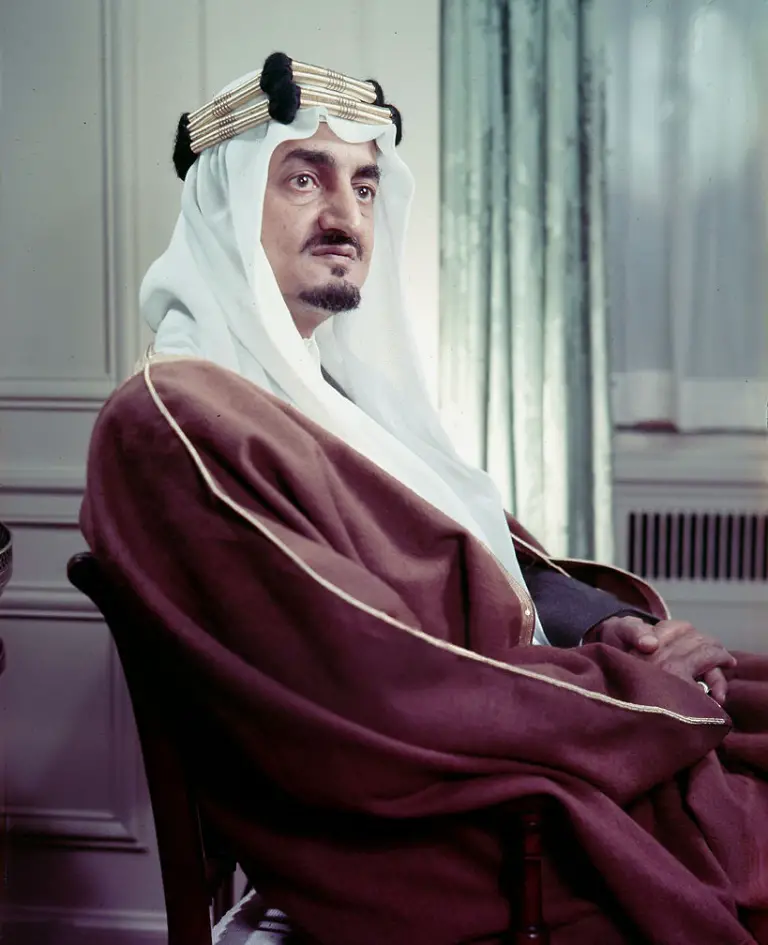Faisal bin Abdul Aziz
(1906 - 1975)

Faisal bin Abdul Aziz was King of Saudi Arabia from 1964 to 1975.
Faisal was born in Riyadh, the fourth son of Ibn Saud. In 1925, Faisal, in command of an army of Saudi loyalists, won a decisive victory in the Hijaz. In return, he was made the Governor of Hijaz the following year. After the new Saudi kingdom was formalized, Faisal received the post of Minister of Foreign Affairs in 1932.
After the United Nations partition of Palestine, Faisal called on his father to break relations with the United States, but he was overruled. When Saud's health failed, Faisal was appointed regent, assuming office on March 4, 1964. On November 2 of that year, he became king after his brother Saud was deposed and left for Greece.
Faisal introduced reforms such as girl's schools and television, but these reforms were opposed by many Saudis, including members of the royal family, as both were seen to be against Islam. He was devastated when Israel won the 1967 Six-Day War and he purportedly never smiled again.
In 1973, Faisal began a program intended to increase the military power of Saudi Arabia. On October 17, he withdrew Saudi oil from world markets, quadrupling the price. Faisal's action was the primary force behind the 1973 energy crisis. In 1974, he was named Time magazine's Man of the Year.
Faisal was shot and killed by his nephew, Faisali bin Musad, on March 25, 1975. He was succeeded by his brother Khalid.
The city of Lyallpur in Pakistan was renamed Faisalabad in 1979 in his honor. The Faisal Mosque in Islamabad, Pakistan is named after him as well. The Main Highway in Karachi was renamed Shahrah-e-Faisal; a residential area close to Karachi Airport was renamed Shah Faisal Colony.
Source: Wikipedia. This article is available under the terms of the GNU Free Documentation License.
Photo: Public domain via Wikimedia Commons.


